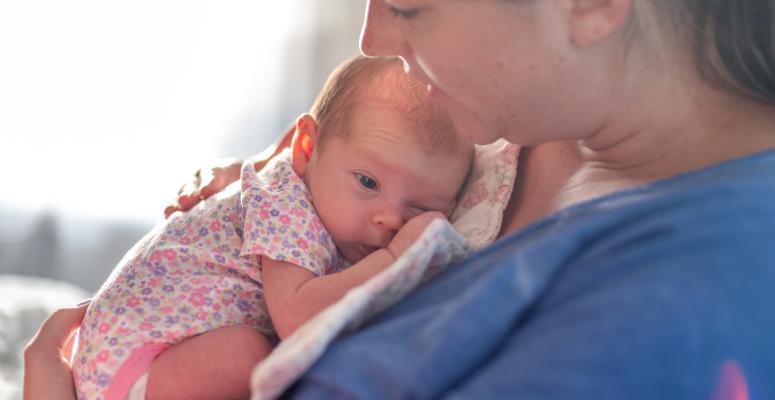
Pregnancy and birth completely changes your body’s alignment and structure. As a result, it is very common for women to deal with lasting musculoskeletal issues after giving birth. These symptoms can affect your mobility, comfort and quality of life. Postpartum rehabilitation can not only help ease your symptoms, but it can also help you regain strength.
What are the common physical issues women experience before postpartum rehab?
The effects of bodily changes during pregnancy and birth can still be felt postpartum. Many women still struggle with the following physical issues after giving birth:
- Pelvic pain — The pelvis, which connects your torso to your lower extremities, can be severely stretched during pregnancy and birth, leading to chronic pain. In fact, pregnancy-related pelvic pain affects up to 50% of women, and several of those women struggle with it years after birth. The pelvic floor muscle can be scarred from birthing injuries or can be painful due to changes in posture after giving birth. Pelvic pain often occurs while sitting or during a bowel movement.
- Low back pain — Low back pain is a major postpartum symptom. During pregnancy and birth, your lower back becomes overworked, stretched and stressed. Your core, which supports your lower back, may also be weakened. As a result, low back pain can be treated with core-strengthening exercises. You can work with a physical therapist to target your abdominal muscles as well as your pelvic floor. Your physical therapist can also help keep your spine stabilized during exercises and can ensure that you are keeping it in a neutral position while sitting.
- Incontinence — The pelvic floor is an important muscle serving many functions. One of those functions is to contract and release to control the release of urine and feces. However, that function can be complicated after the pelvic walls become injured and overstretched during birth. Trauma to your pelvic floor can lead to symptoms of incontinence, or the inability to control the release of urine or feces. This type of symptom can severely impact your quality of life and self-esteem. Rehabilitation exercises can help strengthen your pelvic floor so that incontinence is no longer your major worry.
- Foot pain and swelling — When you carry a baby, your legs hold both your weight and up to 9 additional pounds. This extra pressure throughout the day can irritate your feet and restrict your blood flow, causing them to swell with fluid. You can experience foot pain and swelling long after giving birth, as carrying your baby could have caused lasting damage to your feet’s muscles and joints. Physical therapists can perform targeted exercises that regenerate blood flow to your feet and encourage them to heal. Your physical therapist may place you in a boot or brace to help accelerate your healing.
Why should women consider postpartum rehab?
Postpartum rehab can help you realign your body after taxing events like pregnancy and birth. It can also:
- Be a safe space for you to voice your concerns in a one-on-one environment. Talking about your postpartum needs can be uncomfortable. Physical therapists can listen to your concerns with an open mind and work with you to find treatments and exercises that work for your specific body and concerns.
- Increase your quality of life. Living with postpartum symptoms like pelvic pain or incontinence can affect your emotional state. It may make you feel depressed, anxious and self-aware. Rehabilitative exercises can help you regain confidence in your body’s functions and reduce your anxiety when in public.
- Improve your mobility and pain levels. One of the main goals of physical therapy is to increase your comfort while moving. Whether you feel pain or stiffness during movement, mobility exercises can help you reduce inflammation and pain so that you can move with minimal discomfort.
- Fast-track your healing process. Physical therapists can introduce you to exercises that you can continue at home. By supplementing your treatment plan with at-home exercises, you can improve your alignment faster and boost your progress.
Alliance PTP is ready to help you find top-notch PT for postpartum rehab
Are you ready to ease your postpartum pain and strengthen your body? At Alliance Physical Therapy Partners, we’re proudly bringing together physical therapy practices across the country to help people get the high-quality PT they need. Want to see a physical therapist in person? We can put you in touch with an Alliance PTP partner that’s close to you and that can help you find postpartum rehab.
Not keen on in-person PT sessions or not close to an Alliance PTP partner? No worries. We also offer effective and affordable virtual physical therapy through our Agile Virtual Physical Therapy platform.
Come find a physical therapist who can help you get the postpartum rehab you’re looking for.
Get Help at a Location Near You
